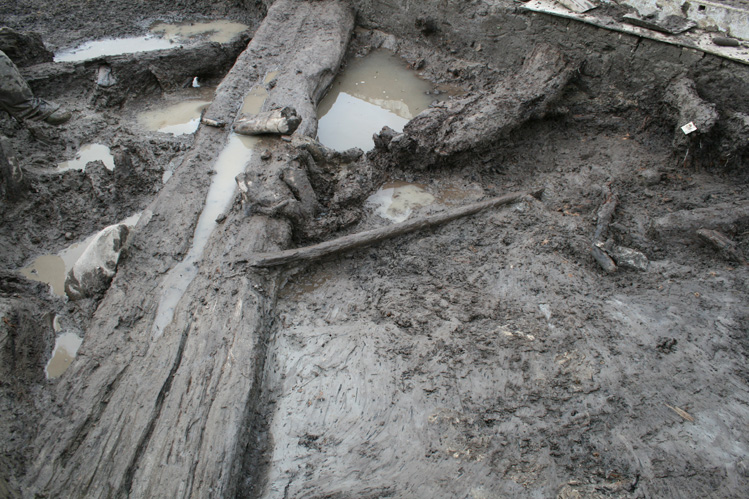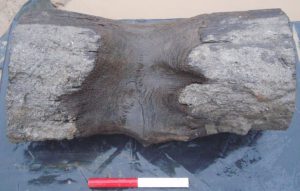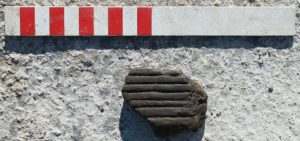
Two wooden tridents or forks and what may have been the haft of a paddle (the blade was missing), were placed along the northern edge of the stream that would have flowed there at the time when the wooden platform was constructed. Indeed these wooden objects may have been foundation elements, placed early in the construction of the platform. Radiocarbon assay of the sapwood surviving at the outer edges of the tridents has produced disparate and, slightly puzzling results of and, which nether the less demonstrate that they are of Neolithic origin.

The function of the tridents/forks is not known. Both had broken in antiquity, with, the apparently older, one missing two of its tines and the other being deposited with a tine, which had broken from it, tucked beneath it. In general, their shape resembles that of a modern culinary fork, with three parallel, straight-sided tines, but above the tines there is a well-marked ‘step’, the purpose of which is not obvious.

Both objects have been finely carved, using stone tools, from single pieces of oak heartwood. They are over 2m long, with hafts tapering to points, and the carefully-chamfered tines show no sign of use wear. The trees selected from which to carve the objects were mature specimens, which, if comparable to similar oaks recovered from the palaeochannel, would have been hundreds of years old. In the nineteenth century, comparable objects were found elsewhere, with two being recovered from Ehenside Tarn, in western Cumbria, and another two being found in a peat bog in Co Armargh, Northern Ireland, although no similar finds have been recovered by modern archaeological methods.

The paddle haft revealed and cleaned, before lifting.


